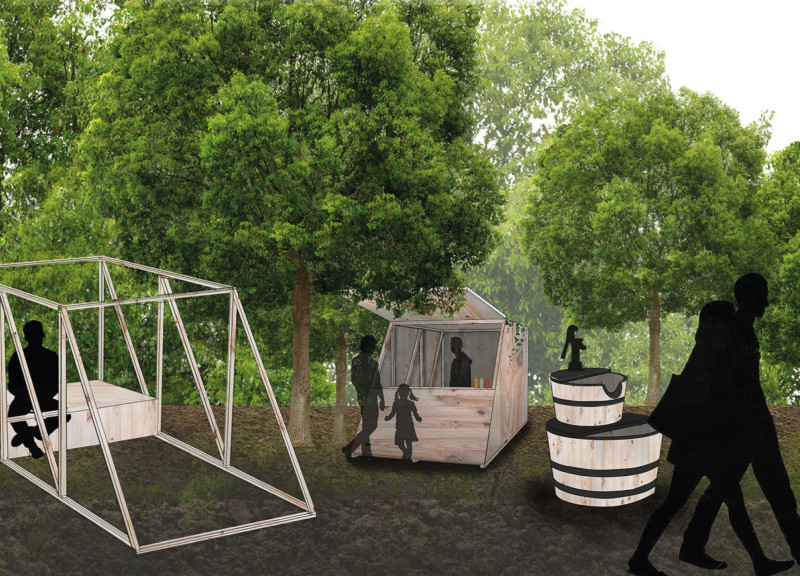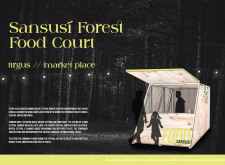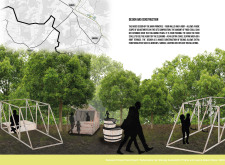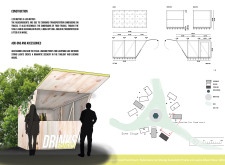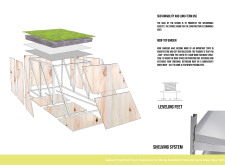5 key facts about this project
The Sansusí Forest Food Court is located in the calm landscape of Latvia, created for the annual Sansusi Chamber Music Festival. Its purpose is to offer a vibrant food court that serves as a marketplace and gathering point for festival-goers. The overall design focuses on simplicity and functionality, combining temporary structures with elements of contemporary art. This approach aims to enhance the festival experience while celebrating the connection between community and nature.
Design Concept
At the center of the food court's design is a basic layout featuring four walls and a roof. This straightforward approach allows for versatility in setting up the food stalls. Different configurations can be arranged to meet the varying needs of the festival. There is also the possibility of stacking stalls, which effectively uses vertical space. This can create extra areas for performances or seating, contributing to a lively atmosphere.
Materiality
The primary material used in the design is spruce wood, selected for its sustainability and suitability for the local environment. Using this material reflects an understanding of the surrounding landscape and emphasizes ecological principles. The dimensions of the structures take into account easy transport and quick assembly. This is particularly important for the temporary nature of the food court during the festival.
User Experience
Accessories like outdoor string lights are included to enhance the overall experience of the space. These lights help create a cozy atmosphere, especially during evening events. The design encourages gatherings and conversations among festival-goers. Seating and performance areas are thoughtfully arranged around the food stalls, promoting interaction and making the space a dynamic hub of activity.
Sustainability
The design also prioritizes sustainability, incorporating roof gardens into the concept. These green roofs not only add visual interest but also encourage biodiversity in the area. By utilizing roof space for ecological purposes, the project aims to reduce its environmental impact. This focus on sustainability contributes positively to both the local ecosystem and the festival’s ethos.
The careful integration of these design elements creates a setting that fosters community engagement while blending with the natural surroundings, supporting a unique atmosphere for all who attend the festival.


